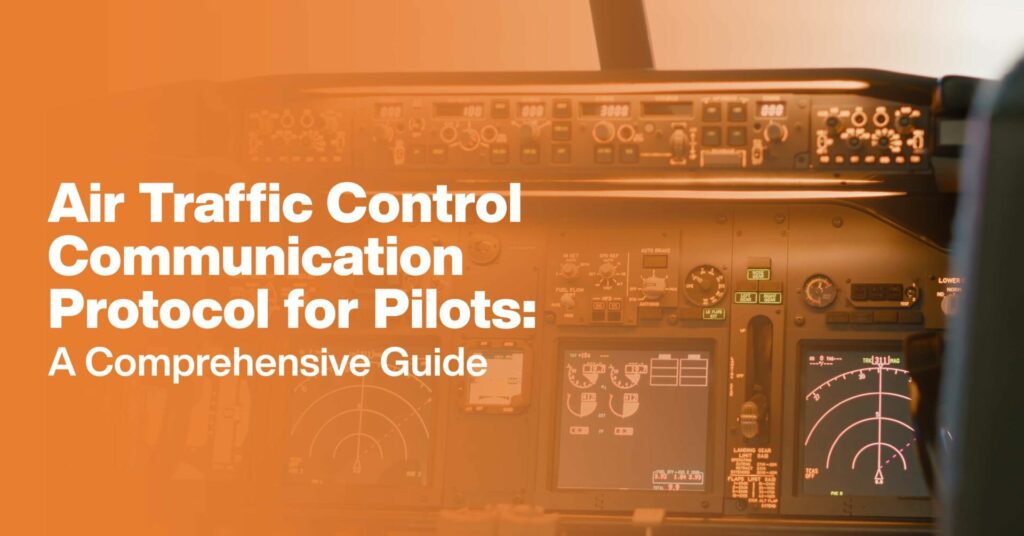As a pilot, one of the most crucial skills to master is proper communication with air traffic control (ATC). Effective communication ensures safe and efficient operations in the busy airspace system. In this article, we will discuss essential air traffic control communication terms and phrases that every pilot should know, and how to effectively communicate with ATC in various situations.
Introduction to Air Traffic Control Communication Terms
Air traffic control communication is the exchange of information between pilots and air traffic controllers for the purpose of safe and efficient air traffic movement. The
communication process involves a combination of standard phrases, abbreviations, and procedures. The use of these standardized terms and phrases ensures clarity and reduces the potential for miscommunication.
Importance of Proper Communication in Air Traffic Control
Proper communication is essential in air traffic control to ensure that all parties involved are aware of the current situation and can take necessary action. Miscommunication can lead to accidents and incidents that may have serious consequences. Pilots and air traffic controllers must communicate effectively to ensure safe and efficient operations in the airspace system.
Basic Air Traffic Control Communication Terms and Phrases
The following are some basic air traffic control communication terms and phrases that every pilot should know:
1. Roger
This means “message received and understood.
2. Wilco
This means “will comply with your instructions.
3. Cleared for takeoff
This means the aircraft is authorized to take off. “Cleared to land” – This means the aircraft is authorized to land.
4. Go-around
This means the pilot should abandon the landing attempt and fly a circuit.
Advanced Air Traffic Control Communication Terms and Phrases
In addition to the basic terms and phrases, there are also advanced air traffic control communication terms and phrases that pilots must know. These include:
1. Hold short
This means the aircraft must stop short of the runway.
2. Taxi to
This means the aircraft is authorized to taxi to a specific location.
3. Standby
This means the aircraft should wait for further instructions.
4. Vectors
This means the aircraft will be given heading and altitude instructions to follow.
5. Speedbird
This is the call sign for British Airways.
Communication Procedures Between Pilots and Air Traffic Control
Communication procedures between pilots and air traffic control follow specific protocols. These procedures ensure that communication is clear and efficient. Here are the key steps:
1. The pilot initiates communication with ATC and identifies their aircraft.
2. The pilot receives clearance from ATC for takeoff, landing, or other instructions.
3. The pilot acknowledges the clearance and complies with ATC instructions
4. The pilot reports any changes in the flight plan or emergency situations.
5. ATC provides further instructions as needed.
How to Communicate with Air Traffic Control in Emergency Situations
In emergency situations, effective communication is critical. Pilots must communicate clearly and efficiently to ensure that ATC understands the situation and can provide the necessary assistance. Here are some tips for communicating with ATC in emergency situations:
1. Remain calm and speak clearly.
2. Use standard phrases and procedures.
3. Be concise and provide only essential information.
4. Follow ATC instructions.
5. Report the emergency situation as soon as possible.
Tips for Learning Air Traffic Control Communication
Learning air traffic control communication can be challenging, but it is essential for safe and efficient operations in the airspace system. Here are some tips for learning air traffic control communication:
1. Study the standard phrases and procedures.
2. Practice communication with a flight instructor or simulator.
3. Listen to ATC communication on the radio or online.
4. Attend a training course or workshop.
5. Review and analyze communication errors to avoid making the same mistakes.
Resources for Air Traffic Control Communication Training
There are numerous resources available for pilots to learn about air traffic control communication. These include:
1. FAA publications and guides.
2. Online courses and workshops.
3. Flight training schools and instructors.
4. ATC communication simulators.
5. ATC communication apps and software.
Common Mistakes to Avoid in Air Traffic Control Communication
Communication errors can have serious consequences for air traffic control. Here are some common mistakes to avoid:
1. Using non-standard phrases or abbreviations.
2. Failing to acknowledge ATC instructions.
3. Providing incomplete or inaccurate information.
4. Using inappropriate tone or language.
5. Failing to report emergencies or changes in the flight plan.
Conclusion
Mastering air traffic control communication terms and procedures is essential for safe and efficient air traffic movement. Pilots must be familiar with the standard phrases and procedures and practice effective communication with ATC. By following the guidelines and tips outlined in this article, pilots can improve their communication skills and ensure safe operations in the airspace system.
Frequently Asked Questions
In this section, we address some of the most frequently asked questions related to air traffic control communications.
1. Why is it important for pilots to know air traffic control (ATC) communications?
It is important for pilots to know ATC communications to ensure safe and efficient air travel.
2. How can pilots improve their ATC communication skills?
Pilots can improve their ATC communication skills by practicing and studying the relevant regulations and procedures.
3. What are some potential consequences of poor ATC communication?
Poor ATC communication can lead to misunderstandings, delays, and even accidents
4. How do air traffic controllers handle communication in bad weather conditions?
Air traffic controllers use a variety of tools and procedures to handle communication in bad weather conditions, including rerouting aircraft and providing additional information to pilots.
5. What kind of equipment is used for air traffic control communications?
The equipment used for ATC communication includes radios, telephones, and data link systems that allow for the exchange of voice and text messages between pilots and controllers.

